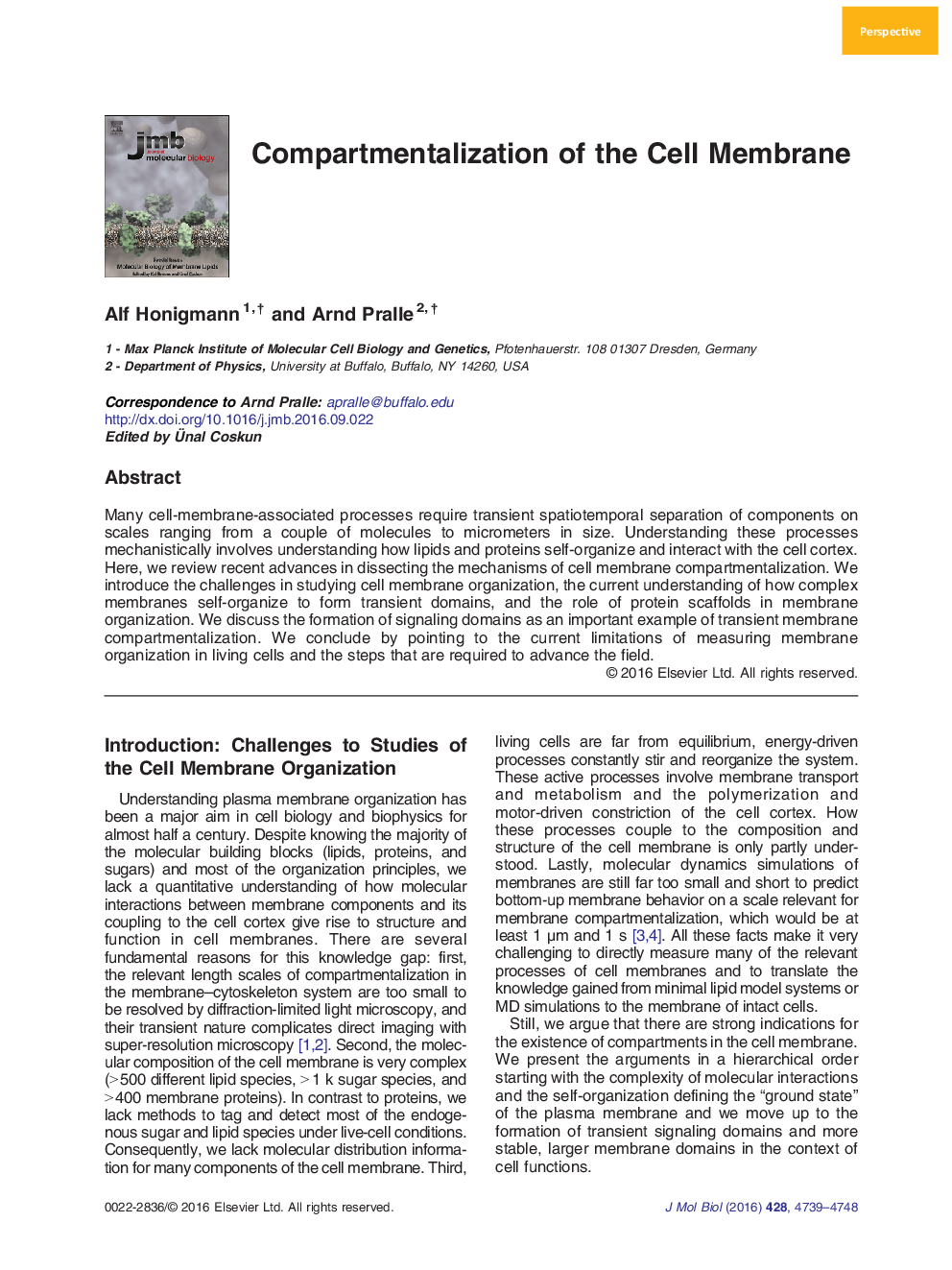| Article ID | Journal | Published Year | Pages | File Type |
|---|---|---|---|---|
| 5533340 | Journal of Molecular Biology | 2016 | 10 Pages |
â¢Transient spatial patterns arise in plasma membrane and cortical membrane network.â¢Within the lipid bilayer, components separate or cluster due to specific interactions and matching collective membrane properties.â¢Anionic lipids in the cytosolic membrane leaflet are sequestered by multivalent ions and proteins.â¢The membrane skeleton provides a scaffold that orders membrane proteins and provides nucleation points for domains while preventing large-scale phase separation.â¢The membrane skeleton affects actively lipid domains, while specific lipid domains enhance the polymerization of the membrane skeleton, providing bidirectional feedback.
Many cell-membrane-associated processes require transient spatiotemporal separation of components on scales ranging from a couple of molecules to micrometers in size. Understanding these processes mechanistically involves understanding how lipids and proteins self-organize and interact with the cell cortex. Here, we review recent advances in dissecting the mechanisms of cell membrane compartmentalization. We introduce the challenges in studying cell membrane organization, the current understanding of how complex membranes self-organize to form transient domains, and the role of protein scaffolds in membrane organization. We discuss the formation of signaling domains as an important example of transient membrane compartmentalization. We conclude by pointing to the current limitations of measuring membrane organization in living cells and the steps that are required to advance the field.
Graphical AbstractDownload high-res image (248KB)Download full-size image
